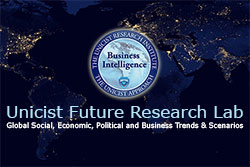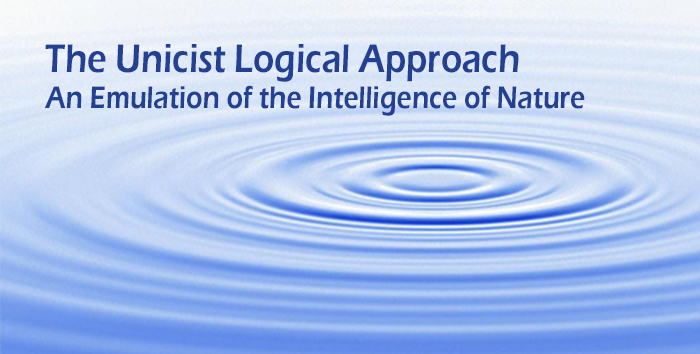The Unicist Research Institute
Pioneers in Complexity Science Research since 1976




Development of Long-term Micro-economic Growth
The objective of the development of long-term micro-economic growth plans is based on developing structural non-partisan proposals that work as an input for governments to develop long-term plans that foster growth for the coming generations.
This is a non-profit activity developed by The Unicist Research Institute and promoted by the Unicist School. It is based on developing 50-year micro-economic growth scenarios. These scenarios and plans are developed by Unicist Think Tanks with the participation of local Foundations, local Think Tanks and Delphi Groups integrated by industry leaders of the countries involved, using the unicist conceptual economic technology to manage the complex aspects of economic evolution.

To learn about the unicist future research approach, you can access some of the public future studies to detect trends and forecast the future that were developed at The Unicist Research Institute.
Economic Future Scenarios
The Unicist Conceptual Economics was developed to deal with the nature of economic behavior allowing the development of transgenerational plans to promote the development of countries. The economic scenario of a country drives the development of its social and political scenarios.
The development of these micro-economic growth scenarios requires the installation of State policies that go beyond governmental actions. These 50-year plans are based on the development of structural scenarios that include the restricted and wide contexts. They require a transgenerational approach that requires the use of 20- and 10-year scenarios to monitor the evolution.
Unicist Conceptual Economics set a new starting point in the development of accurate economic scenarios. An international expert, Alan Greenspan, recognized the need of a conceptual approach to economy in order to maximize the predictability of economic scenarios.
Managing economics as a complex adaptive system is a breakthrough that allows dealing with the world of possibilities before entering the world of probabilities. It was triggered by the need to find a structural solution to different countries. The objective was to find the concepts that allow adapting the systemic economy to the true drivers of economics considered as a complex system managing its unified field.
The Unicist Approach to Future Research
The Unicist Approach to Future Research is used for the building of future scenarios of countries and markets. It is based on the unicist ontological structure of a particular reality that is found in the past, the use of the data of the present and an inference of the future based on the use of a double dialectical logic.
It has to be considered that the evolution of technologies is the operational driver of ideologies, ethics and social evolution, which implies that the technological trends strongly influence the alternative future scenarios.
The unicist approach to future research is based on inferring the future based on the laws of evolution established by the ontogenetic intelligence of nature, which allowed developing the unicist ontology of evolution.
The Unicist Theory of Economic Growth
This is a fundamental approach to economic growth. Fundamentals describe and implicitly define the structural functionality of a reality. The unicist ontology describes the nature of a reality and fundamentals are the synthesis of that description. Fundamentals are the objects included in the ontology. If we describe the fundamentals of economic growth, we can say that economic growth is based on technology, monetary circulation, competitiveness and scarcity.
The Conceptual Economics Technology
Conceptual economics defines the fundamentals that drive the real economy of an environment. Conceptual economics deals with the nature of the actions that allow managing the production, distribution and consumption of goods and services.
It proposes defining what is possible to be achieved given the present circumstances, defining the actions that need to be done to improve the future circumstances and then finally use this definition of possibilities as an input for the systemic approaches to define the operational actions within the limits that have been established.
The unicist conceptual economics opened the field of understanding the unified field of economic behavior that allows defining what is possible to be achieved now and what needs to be done to expand the fields of possibilities in the future.
The integration of the structure of the archetype of a country, the dominant concept of work, the fundamentals of economic behavior and the necessary economic ideology defines the possibilities of structural stable economic model to foster evolution.
Translate
The Unicist Paradigm Shift in Sciences
The unicist approach to complexity emulates nature to deal with natural or artificial complex adaptive systems. Such emulation is based on the discovery of the ontogenetic intelligence of nature that regulates the evolution of living beings and natural entities.
The Unicist Theory explains the dynamics and evolution of living beings and complex adaptive entities. It substituted empiricism by a pragmatic, structuralist and functionalist approach and replaced knowledge falsification processes with destructive testing processes.
The four pillars of the paradigm shift in science are:
- 1) The unicist theory, which explains the dynamics and evolution of living beings and complex adaptive entities.
- 2) The unicist theory of evolution, which allows forecasting future scenarios.
- 3) The epistemological structure of complexity sciences, which allows managing the complex aspects of reality.
- 4) The unicist theory of the unified field in nature, which allows managing the unified field of complex adaptive systems.
Country Archetypes Developed
• Algeria • Argentina • Australia • Austria • Belarus • Belgium • Bolivia • Brazil • Cambodia • Canada • Chile • China • Colombia • Costa Rica • Croatia • Cuba • Czech Republic • Denmark • Ecuador • Egypt • Finland • France • Georgia • Germany • Honduras • Hungary • India • Iran • Iraq • Ireland • Israel • Italy • Japan • Jordan • Libya • Malaysia • Mexico • Morocco • Netherlands • New Zealand • Nicaragua • Norway • Pakistan • Panama • Paraguay • Peru • Philippines • Poland • Portugal • Romania • Russia • Saudi Arabia • Serbia • Singapore • Slovakia • South Africa • Spain • Sweden • Switzerland • Syria • Thailand • Tunisia • Turkey • Ukraine • United Arab Emirates • United Kingdom • United States • Uruguay • Venezuela • Vietnam
Main Markets (Generic)
• Automobile • Food • Mass consumption • Financial • Insurance • Sports and social institutions • Information Technology (IT) • High-Tech • Knowledge Businesses • Communications • Perishable goods • Mass media • Direct sales • Industrial commodities • Agribusiness • Healthcare • Pharmaceutical • Oil and Gas • Chemical • Paints • Fashion • Education • Services • Commerce and distribution • Mining • Timber • Apparel • Passenger transportation –land, sea and air • Tourism • Cargo transportation • Professional services • e-market • Entertainment and show-business • Advertising • Gastronomic • Hospitality • Credit card • Real estate • Fishing • Publishing • Industrial Equipment • Construction and Engineering • Bike, motorbike, scooter and moped • Sporting goods
Copyright© 2024
The Unicist Research Institute

























